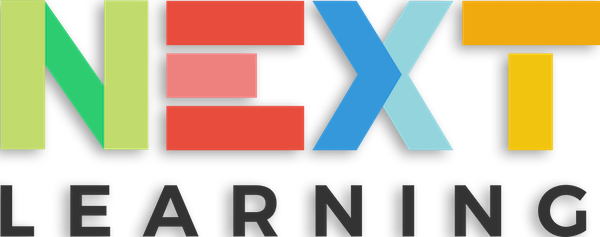Students and schools in Australia have access to high-quality digital technology. Still, teachers do not use it, and in certain situations, schools do not encourage teachers to learn how to use it.
The US will spend $27.6 billion on education technology in 2022
A new analysis estimates that the United States will spend $27.6 billion this year on education technology. EdTech is expanding at a rate of 16.3 per cent and will multiply by 2.5 between 2019 and 2025, reaching $404 billion in total global expenditures. Even at this level, EdTech and digital spending will comprise only 5.5% of the $7.3 trillion worldwide education industry in 2025.
Link: https://www.holoniq.com/notes/global-educa+on-technology-market-to-reach-404b-by-2025
The EdTech market in Australia is maturing. Between 2017 and 2019, the EdTech industry in Australia nearly doubled in size, demonstrating substantial growth. During this period, many EdTech companies have transitioned from “start-ups” to “scale-ups.” A scale-up is distinguished by the fact that it has moved from concept to the delivery of one or more education services. In addition, they have developed customer bases and recurring monthly income streams. This is both positive and insufficient: Australia must do more to participate in an increasingly inventive and competitive global education market.
Link: https://edugrowth.org.au/programs/ecosystem/australian-edtech-market-census-2019/
Australian schools are the world’s largest adopters of technology in the classroom
According to a study, Australian schools are among the world’s largest adopters of technology in the classroom. As a result, parents pay up to $1000 for digital gadgets for elementary school pupils and double that for high schoolers.
Tech businesses are competing for an education market that is becoming increasingly lucrative, despite parental worries that schools’ practises are inconsistent and ad hoc and criticism that there is insufficient proof to justify such a substantial investment of time and money.
According to the most current Teaching and Learning International Survey (TALIS), Australian schools are the third largest consumers of information and communications technology (ICT) among OECD countries.

Remote learning brought to the forefront
Incredible advances in data science and machine learning have ripple effects on the education technology industry. Due to the COVID-19 pandemic, the need for many Australians (and people worldwide) to adopt remote learning has been brought to the forefront.
New educational trends will emerge with the expansion of online capabilities and the improvement of learning management systems. This will enable Teachers and Educators to integrate innovative technology into schools, making the learning environment more accessible for pupils.
At the absolute least, Australian schools are not utilising computers to enhance learning efficiently.
Failed to maximise the potential of technology in learning
Australia’s worldwide test results have not improved despite the substantial financial investment in school computers and the widespread usage of computers in the classroom. Reading, mathematics, and science scores have deteriorated in the past decade.
Australia looks to have overinvested in computers in schools financially and in terms of their use in the classroom. At the absolute least, Australian schools are not utilising computers to enhance learning efficiently.
Across the OECD, schools and education systems have failed mainly to maximise the potential of technology in learning.
Students perform pretty well on digital reading examinations, a benefit of Australia’s extensive use of computers in education. Australia is ranked eighth among the 31 nations participating in the tests. However, Australian students remain about a year behind the top-performing nations, and their average performance on the PISA scale decreased by 16 points between 2009 and 2012. Except for Hungary, this was the most significant fall of any country. Australia ranked 12th on computer-based maths testing.
The analysis demonstrates that Australia is not the only nation whose computer investment in schools has failed to boost educational achievements. The analysis found no evidence of a positive correlation between technology investment and student achievement in OECD or other nations.
Gaps in digital skills
Gaps in the digital skills of both teachers and students, difficulties in locating high-quality digital learning resources among a plethora of low-quality ones, a lack of clarity on the learning goals, and inadequate pedagogical preparation for meaningfully integrating technology into lessons and curricula create a chasm between expectations and reality. If these problems are not addressed in the technology plans of schools and education ministries, technology may do more harm than good to the teacher-student interactions that are the foundation of conceptual depth and higher-order thinking.

Australia must address the sufficiency of in-service training courses, the extent of funding for adequate in-service training programmes, and the availability of release time in schools for teachers to attend courses if computer-based technology is to be utilised more effectively in the classroom.
Teachers lack confidence to use modern technologies
The lack of influence of extensive computer use in the classroom on learning outcomes raises questions regarding teacher training in digital technology. Many teachers lack the confidence to use modern technologies to facilitate higher-order learning in the classroom. Australia must address the sufficiency of in-service training courses, the extent of funding for adequate in-service training programmes, and the availability of release time in schools for teachers to attend courses if computer-based technology is to be utilised more effectively in the classroom.
To realise the potential of technology, governments will require a persuasive strategy to increase teacher capacity. And policymakers must improve their ability to garner support for this agenda. …. We must invest in capacity building and change management, generate solid evidence and feed it back to institutions, and support all of this with sustainable funding.
Instructors must become active agents of change, not only in implementing technological advancements but also in developing them.










